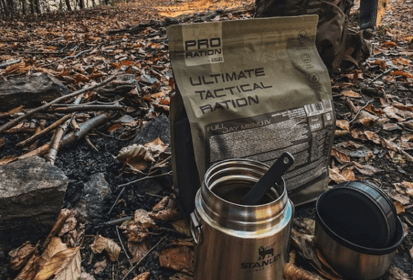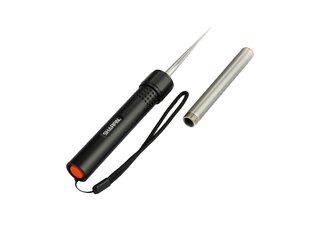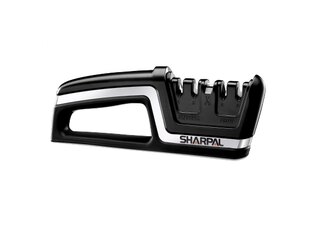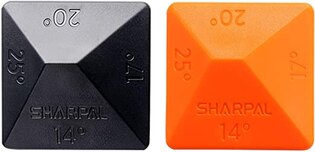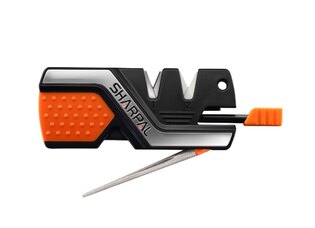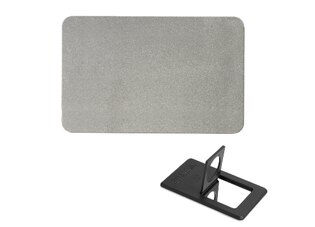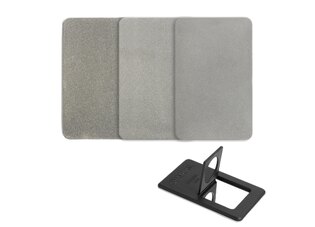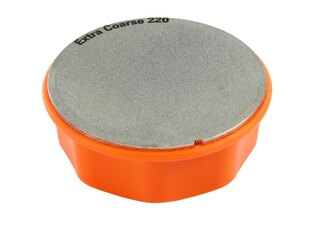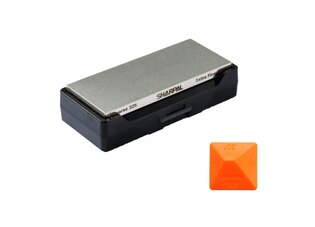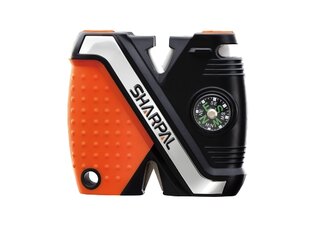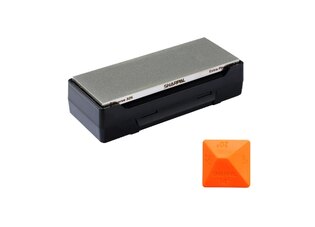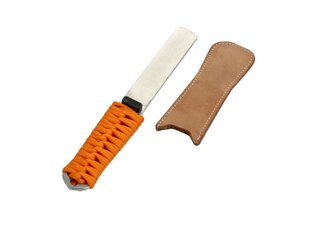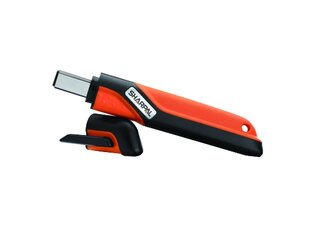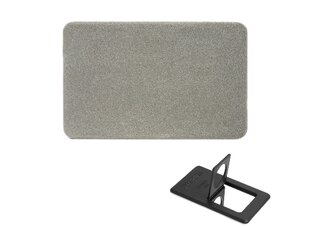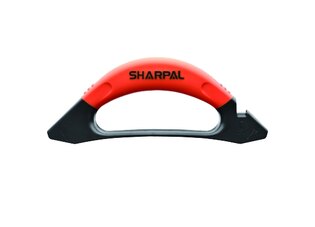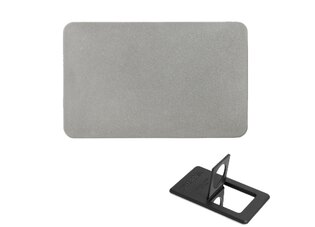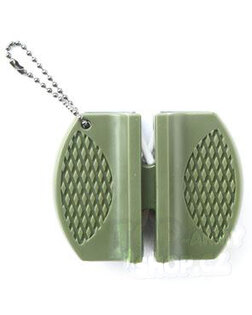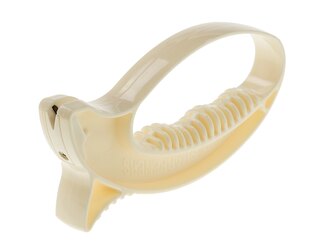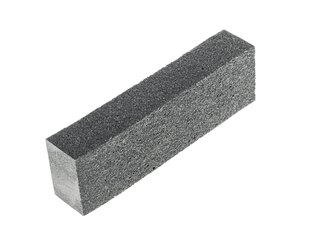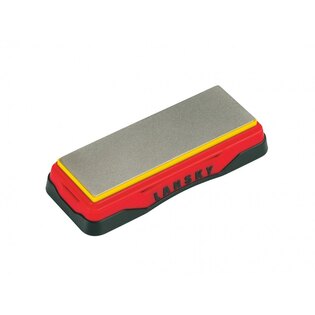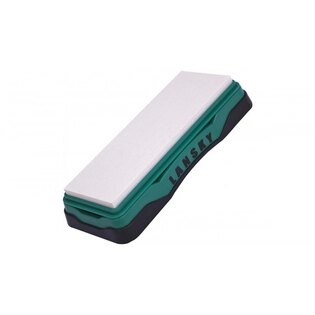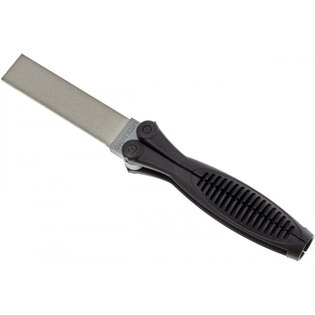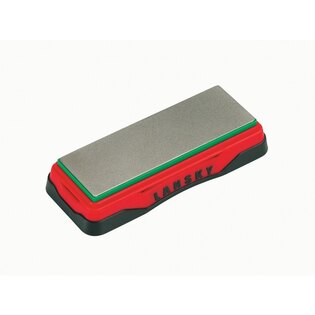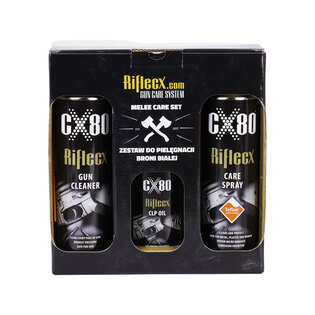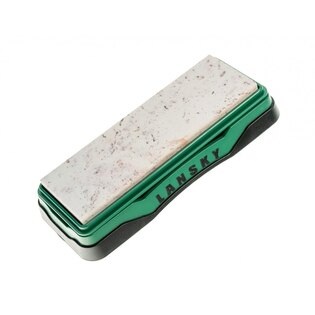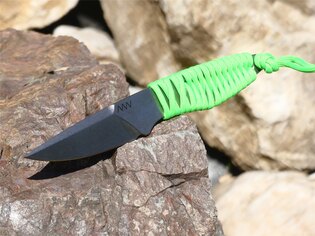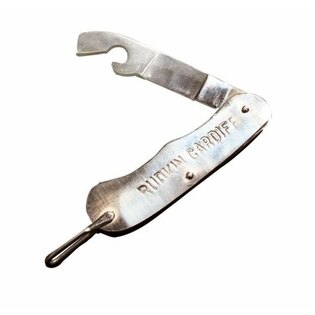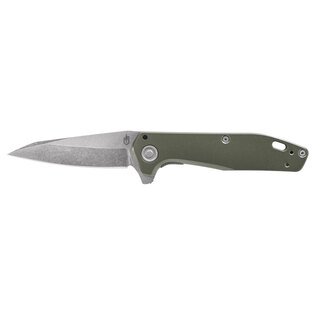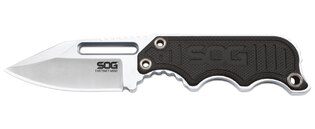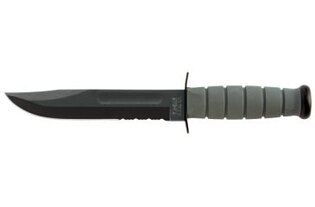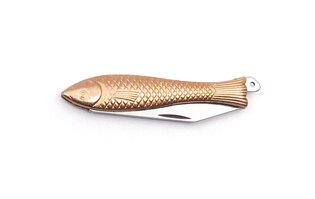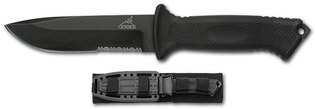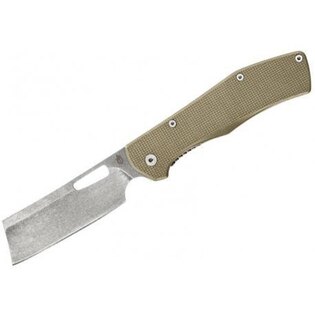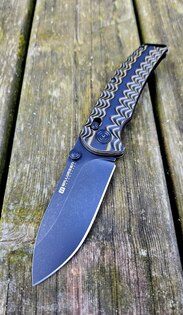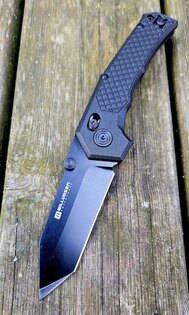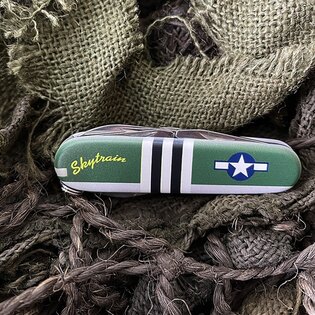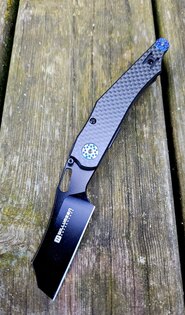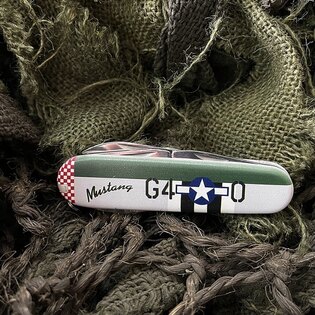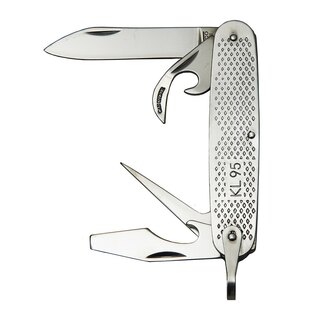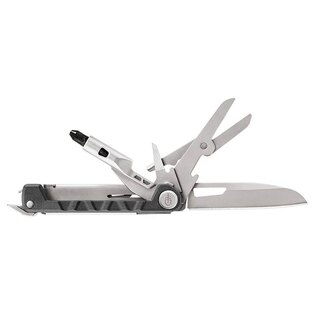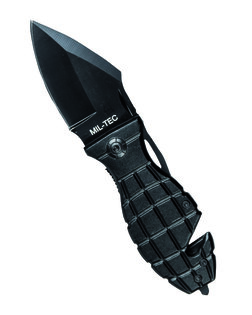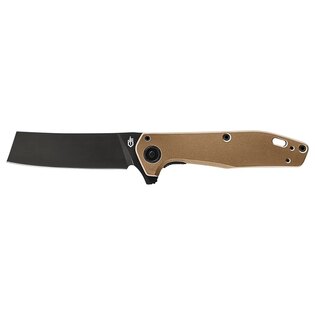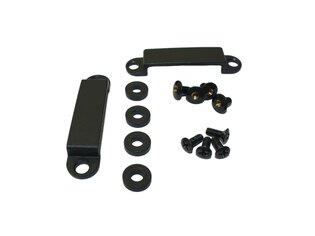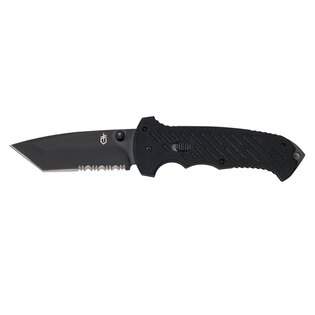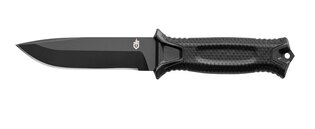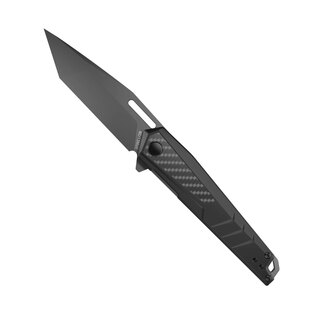Parts of a knife
(1) Blade – the flat and elongated working part of a knife, usually ending in a pointed tip; more about the knife blade by clicking on the link.
(2) Handle – the part of the knife used to hold and manipulate it. For a list of materials commonly used to make a knife handle, click on this link. However, we do not only divide the handles according to their material, but also according to the method of assembly on the blade—see tang (14) and liners (19).
(2.a) Hilt – the main, gripping part of the handle.
(2.b) Butt / Pommel – extended end of the handle.
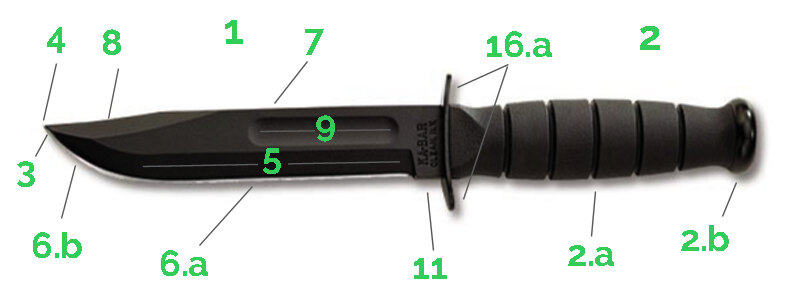

(3) Tip – the part of the blade located at the front, which is the mouth of the blade in most knives and ends in a point.
(4) Point – end of the tip. The point and its location together with the edge determine the penetrating and cutting properties of the knife. It is the point, its location and the shape of the blade that determine the use of a particular knife. You can learn more about knife blade shapes by clicking on the link.
(5) Grind – the area at the bottom of the blade that determines the knife's cutting properties, toughness and blade angle; more about this part of the knife blade after clicking the link.
(6) Edge/Bezel – sharpened lower edge of the blade; the bezel is used for slicing, cutting and similar activities; for the blade, the angle of the bezel is important, which defines how sharp the knife will be—in general, the smaller the angle of the bezel, the sharper the blade is. The facet angle is given by the grinding angle (5) and can never be smaller. But the cutting and penetrating capabilities of the knife are also determined by the length of the bezel, here its ace-shaped bend is sometimes used to lengthen the bezel, which does not unnecessarily lengthen the blade.
(6.a) Straight edge – a straight part extending over most of the straight part of the blade; if the point is not located at the very bottom, as with the sheepsfoot blade type, the blade goes into an arc and creates a so-called belly (6.b); with the handle, the blade is often not drawn all the way to it, between the sharp part of the blade and the handle there is a part known as a post (11).
(6.b) Belly – arch in the front part of the blade, the bezel is usually drawn to the tip (4).
(7) Back / spine – usually the upper blunt edge of the blade, for which the term back is used, the term spine is used if this line is located in the middle—for spear point and needle point blades; the back can be of the same strength as the blade, narrowed or, on the contrary, widened—we can see the narrowed back on some modern knives, it gives them a more aggressive look, but it is more suitable for combat knives or the narrowing should not extend to the handle, because during work, especially with longer , pressing uncomfortably into the leaned thumb; the widened spine brings increased blade resistance to breakage and can be found, for example, in oriental knives.

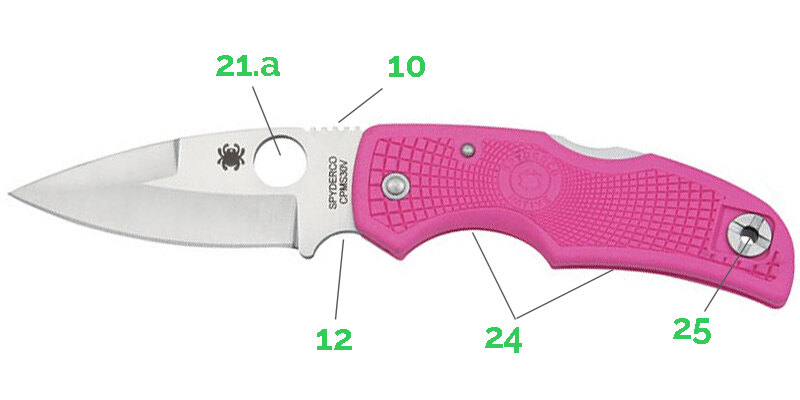
(8) False edge – usually on the blunt back of the blade and can be sharpened if necessary to obtain a second edge; in the case of a clip point blade, it is usually located on the front bevel and, after sharpening, is perfect for stabbing and penetrating materials; it can also be placed on a straight part of the back, it often has a jagged design and is then used as a saw, to cut bones or weaker tree trunks.
(9) Fuller – a groove made in the blade to reduce its weight and to strengthen it. This groove was adopted for knives from swords. The weight reduction feature is self-explanatory and effective on virtually any knife, regardless of blade shape and length. The second function, i.e. the strengthening of the blade, results from the doubling of the spine of the blade. A fuller groove on a spear point or needle point blade creates two artificial spines instead of one central one, and adds two artificial spines on other blade types. This will strengthen the blade and increase its resistance to breakage. The function is more important the longer the blade. The second well-known name—blood groove—derives from the erroneously widespread designation of the groove, namely better drainage of the blood of the hunted animal and easier extraction of the knife from the contracted muscles. This designation does not reflect the actual purpose of this groove.

(10) Jimping – a non-slip platform through which pressure can be exerted on the blade and the knife can be guided with the thumb or forefinger; jimping is machined and can also be on the handle; on the other hand, with handmade knives, the blade including the shank (14) is directly artistically decorated with so-called filework (backwork, worked back)—from simple notches, through crosses to various ornaments, this decoration is made with various types of micro files, special tools and a magnifying glass and it takes several hours to make, it often also goes to the handle, grips and inserts and gives the knife a really beautiful and unique look.
(11) Ricasso / post – part of the blade directly in front of the handle, which does not have a cut, i.e. no edge; often has a smaller thickness than the blade itself and is mostly used to place the inscription or logo of the knife manufacturer; if the surface is wide enough, the index finger can be pressed against it, which makes working with the knife very precise; some knives do not have a post at all.
(12) Choil / recess for index finger – the recess of the blade on the lower edge below the post; sometimes it is in front of the handle, sometimes it also passes into the handle; the recess serves to insert the index finger and fulfills the function of protection (16.a).
(13) Heel – the part formed by the blade that is wider than the handle; the heel of the blade is perpendicular or almost perpendicular and fulfills the function of a guard (16.a).
(14) Tang / Handle Shank – the shank or mandrel that comes out of the blade and to which the handle is attached for fixed blade knives. The handle is either a whole, shaped like a tang, or it consists of two handles (17) fixed to the mandrel with rivets (18). There are several types of this blade attachment in the handle used, more after clicking the link.

(15) Etching / engraving – most often placed by the knife maker on the lower half of the blade—on the grind (5) or on the post (11), but it can also be found on the handle and elsewhere; it is either mechanical, hand-made engraving, chemical etching (with acid), machine engraving created by a computer according to three spatial axes (using diamond drills, carbide rotary cutters and polishers) or laser engraving, which is common today; for example, the name or logo of the manufacturer, the name or model number of the knife, the material used to make the blade / handle, and lately the personalization of the knife by means of an engraved name or nickname, a favorite motto, etc. has been widely used (for practical purposes, for collector's items and for donated commemorative knives); handmade knives can have beautiful ornaments etched on them.
(16) Hand protection
(16.a) Guard – the part of the knife between the blade and the handle that prevents the fingers from slipping on the blade and thus prevents injury caused by the blade during grinding and during work or caused by the material being processed; it can be either simple—only on the bottom—or double-sided; is either vertical or canted forwards or backwards, the double-sided guard can be canted in both directions; it can be a very expressive and decorative element of the knife; its function can also be performed by the choil (12) or the heel (13).
16.b) Bolster / protective ring – a metal ring around the handle located just behind the guard, which strengthens the connection between the blade and the handle, fulfills a decorative function and forms a support for the guard. It strengthens the knife, increases its resistance and extends its life. It also balances the disparity between the heavy blade and the light handle, shifting the center of gravity and improving knife handling and control; sometimes it is directly part of the guard (16.a), or the guard is shaped from it.
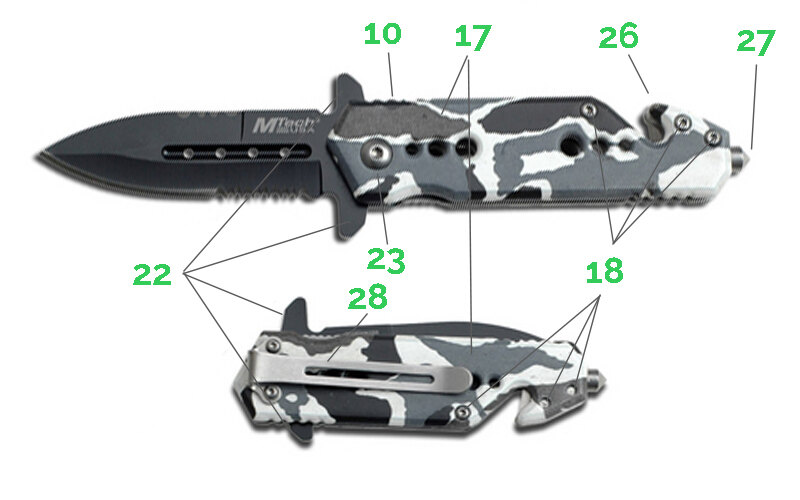
(17) Grips – 2 grips—right and left—together form a handle; for knives with a fixed blade, they are attached to the mandrel (14), for folding knives to the inserts (19).
(18) Rivets / screws / locking pins—fasten the grips and fix them in place; the use of screws instead of rivets makes it possible to remove the grips.
(19) Liners / inserts – in the case of folding knives, the grips are attached to them and at the same time they form a sheath for the blade of the closed knife.
(19.a) Limiting pins – keep the liners at the required spacing.
(20) Safety against closing the knife – when the folding knife is opened, it secures the blade in the open position, so that the knife can be used as if it were a fixed blade knife, without fear of the blade closing accidentally and injuring the hand; there are several types of safeties, more by clicking on the link.
(21) Thumb stud / opening mandrel – a mandrel for easy opening of the blade of a folding knife; this peg can be either one-sided (placed on the left side of the blade for right-handers and vice versa) or double-sided, which is much more common today.
(21.a) Opening hole – an alternative to the mandrel(21), which some users prefer.
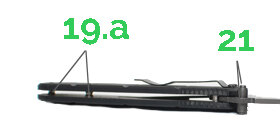
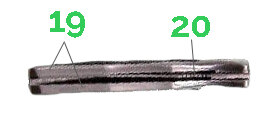
(22) Flipper – is intended for quick and easy opening of the blade of the folding knife; the flipper can be either simple—only on the bottom—or double-sided; it is used in combination with a mandrel (21) or with a hole (21.a) for opening; flipper after opening the knife serves as protection (16.a)
(23) Pivot / center pin – the pin on which the blade of the folding knife is fixed and on which it turns when opening / closing the knife.
(24) Finger arches – a recess in the bottom of the handle that the fingers fit into when gripping, and this makes the grip more secure, firm and sure.
(24.a) Ring for fingers – the ring for putting the index / little finger through is another fairly widespread element for the safety of the grip.

(25) Lanyard hole – a hole for a protection lanyard on the wrist or for a lanyard or paracord to hang the knife around the neck / to attach to equipment.
(26) Safety belt cutting hook – equipment found mainly on rescue knives.
(27) Glass breaking tip / Skull crusher – the tip can be found in rescue knives, where it is intended for breaking glass, for example the window of a crashed car; for combat and survival knives, the label skull crusher is more applicable, since here the tip is primarily intended for striking the enemy.
(28) Attachment clip – the clip allows the pocket knife to be carried without a sheath, attached to a belt or in / on a pocket.
Readers are further interested
